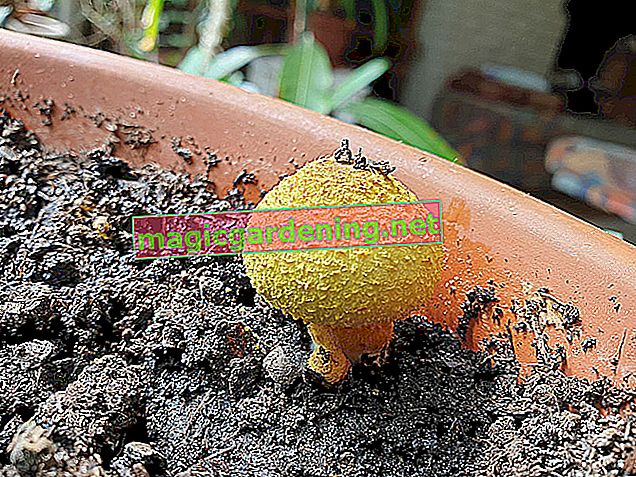
If possible, move roses in autumn
The first step is to choose a suitable time. Roses should not only be replanted in autumn if possible, but also transplanted when the vegetation is dormant. Between October and the beginning of December, a rose can cope with the shock of moving much more easily, and it also has the chance to develop new roots in good time before winter and to sprout again next spring. Transplanting in autumn also has the advantage that the rose is neither exposed to heat stress (such as in late spring or even in summer) nor is there any risk of drying out due to a lack of water and nutrients.
also read
- Successfully dig up and transplant roses
- In which location do Monstera feel comfortable?
- Can a lemon tree feel good in Germany?
Before moving the bed, cut back
While you should always try to transplant the rose as much as possible without damaging the roots in particular, this will not be fully implemented - there will always be some damage, the more the older the plant is. However, kinked or even severed roots also mean that the rose can absorb less water and nutrients, which is why you have to prune back the above-ground shoots and, above all, remove leaves and any remaining flowers. After the excavation, it is also important to prune the roots. The shortening of torn or crushed roots ensures that they are less susceptible to pathogens and are also stimulated to sprout again.
Carefully dig out the rose bush
After pruning, you can finally dig up the rose. To do this, first of all draw a trench around the rose bush, which should be about a spade or two deep - the older the rose, the larger the diameter of the circle and the deeper the trench. Also cut through the roots of the plant so that they are not torn off when you lift them out - the sensitive fine roots are affected much more than when you cut them. Finally, use a digging fork to pry the rose bush out of the hole. Remaining earth can remain on the roots, as this will make it easier for the rose to grow in the new location.
Transporting and storing roses properly
If you do not want to or have to plant the rose in the new location, but instead first store it or even have to transport it to a new location, it is best to wrap the rootstock in damp cloths. These are also enclosed in a plastic bag to protect them from drying out. Roses don't necessarily need to be potted for transport, you can leave them bare-rooted. However, after such an action, it makes sense to water the rose thoroughly before planting by placing the rootstock in a bucket of water for a few hours.
Successfully transplant rose at the new location
Planting in the new location also requires thorough preparation. This not only includes choosing the right location, but also carefully loosening the soil and, if necessary, improving it. Dig up the earth as deeply as possible and crumble coarse crumbs of earth with a rake. Work on a larger area and not only selectively so that your rose can grow more easily in the loose soil. It continues as follows:
- The planting hole should be twice as large as the root ball
- and so deep that the roots are not kinked when planting.
- Improve the excavation with rose earth and / or sand, depending on the soil conditions.
- Also add some compost and a handful or two of horn shavings (€ 6.39 on Amazon *).
- Shake the rose while filling in the soil so that there are no cavities.
- The planting area is then vigorously compacted.
- Now pile the rose up to the tips of the shoots to protect it from the winter cold.
- This mound of earth remains until late spring and is usually removed by the rain on its own.
- Also, cover the rose with some pine or spruce veins.
- Freshly planted roses should also be vigorously watered.
Young roses can cope with a change of location more easily
Young roses that have been in one location for less than five years usually handle a move better than older ones. Young plants have less thick and long roots (especially their taproot is not that long), but more fiber roots that are closer to the surface. The older a specimen, the thicker its roots and the deeper they reach into the ground. If you want to be on the safe side or have to move a rose that is very rare or very old (and difficult or impossible to obtain), it is best to cut cuttings or cuttings and preserve the plant in this way.
Tips
Make sure that the grafting point - unless it is a true-root rose - is about five centimeters below the surface of the ground even when it is replanted.








